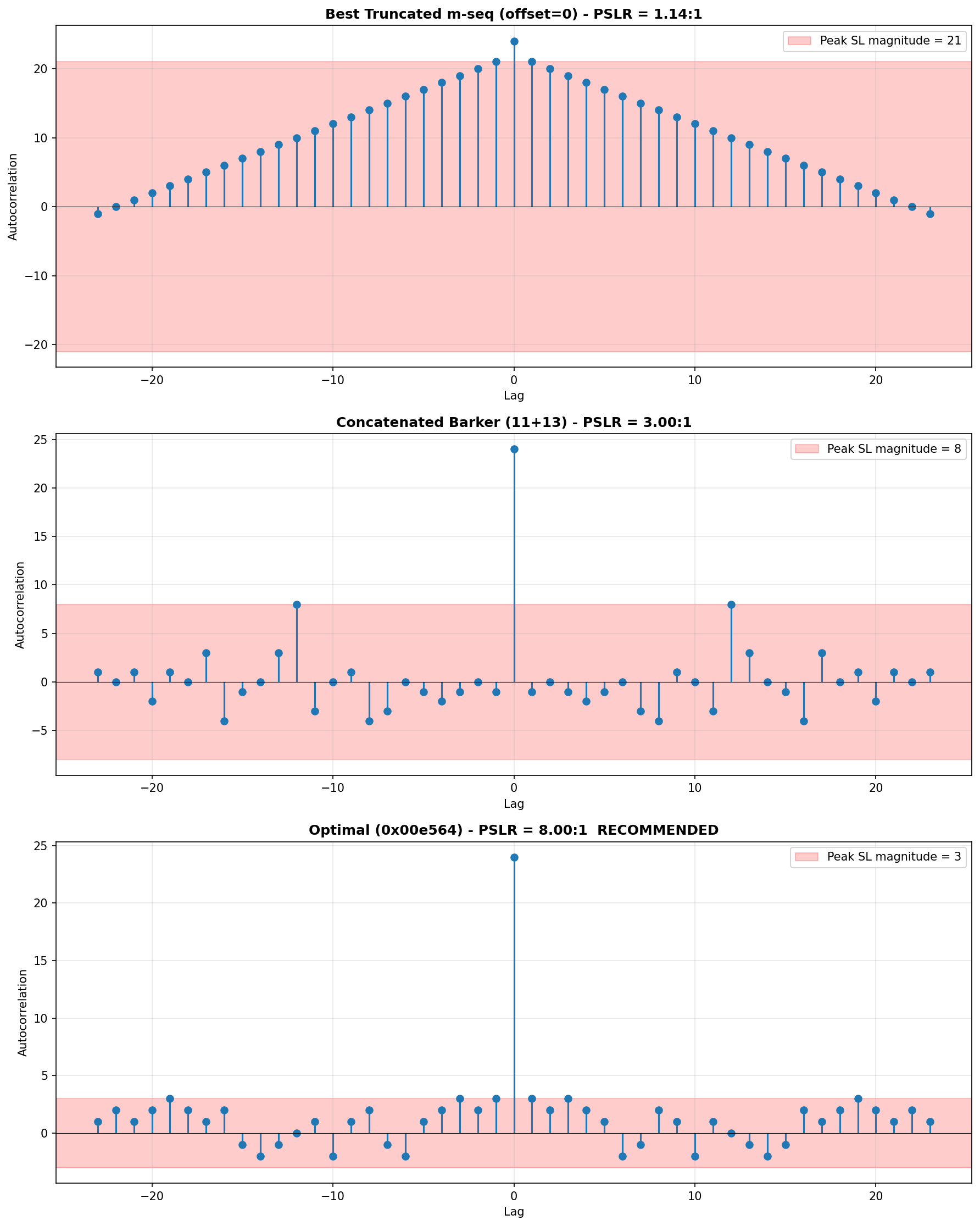Boosted by jsonstein@masto.deoan.org ("Jeff Sonstein"):
abraxas3d@mastodon.radio ("Abraxas3d W5NYV") wrote:
Here’s a figure from an upcoming article about optimizing Synchronization Words in radio signals.
Another solid contribution to open source digital radio from your friends at @OpenResearchIns 🙂
Article will discuss Barker codes, concatenated Barker codes, maximum length sequences and truncations, Zadoff-Chu sequences, metrics of sync words, and how we chose the sync words for Opulent Voice. See the draft article in ORI's next newsletter.
Sign up at https://www.openresearch.institute/newsletter-subscription/
